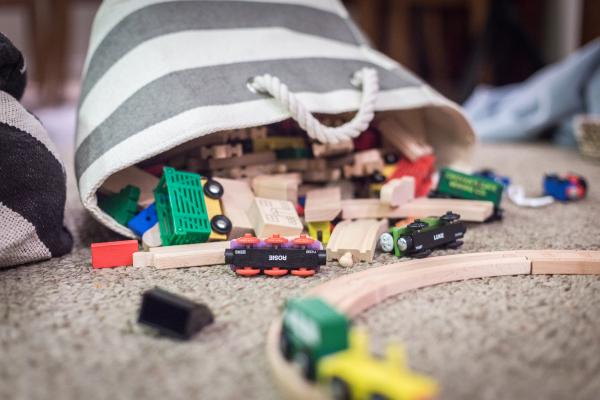Having children means also having their stuff. For those of us who are organizationally challenged, this stuff tends to pile up. Clothes and toys, shoes, toys, books, toys, oh - and more toys.
This time of year, it's not uncommon for people with children to have "getting rid of old toys" somewhere near the top of the list of New Year's resolutions. This year, there is science to motivate that resolution.
A new study published in Infant Behavior and Development shows that cleaning out those old toys may actually improve kids' play.
The researchers showed that when children are presented with fewer toys the quality of their play was improved. This means that they had longer durations of play. On top of that, their focus was better and they played more creatively when there were fewer toys present at once.
Here's the design of the experiment.
Thirty-six toddlers between the ages of 18 and 30 months were tested under two different conditions of toy play. The toddlers had been assessed to ensure that they were of typical developmental status.
Thirty-two different sit-and-play, gender-neutral toys were used in the study, which fell into four groups; educational (toys that may teach a concept such as shapes, colors, or counting), pretend (toys that suggest themed play scenarios for ‘as if’ play), action (toys that can be activated through manipulation or toys that encourage exploration/activity on the part of the toddler), and vehicles (toys that have wheels).
Two sets of conditions were used; the room either held four toys or 16 toys. When four toys were used, one toy from each category was randomly selected. When 16 toys were used, four toys from each category were randomly selected.
When 16 toys were presented, the researchers found that the children played with more toys - which came at a cost of spending time with one toy. With only four toys in the room, the children spent more time on each toy, and in doing so, they developed more creative uses for each toy, with more engagement.
The researchers do not outright state that fewer toys are better. However, a separate study reported that middle-income American homes had an average of 139 toys visible to researchers, with most homes having at least 100 and some as many as 250.
That's a lot of toys, and it isn't too much of a stretch to think that kids can be overwhelmed and distracted in that environment. Perhaps this science will be the motivation we need to follow through on that resolution this year and donate some of the lesser used ones.
Even if I don't see an improvement in my children's ability to focus, at least I'll be able to see the floor in a corner of my living room for the first time in years.
Source: Carly Dauch, Michelle Imwalle, Brooke Ocasio. The influence of the number of toys in the environment on toddlers’ play Infant Behavior and Development Volume 50, February 2018, Pages 78–87




